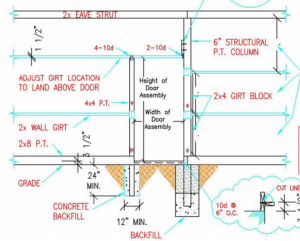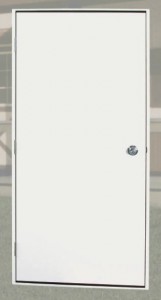New! The Pole Barn Guru’s mailbox is overflowing with questions. Due to high demand, he is answering questions on Saturdays as well as Mondays.
Welcome to Ask the Pole Barn Guru – where you can ask questions about building topics, with answers posted on Mondays. With many questions to answer, please be patient to watch for yours to come up on a future Monday or Saturday segment. If you want a quick answer, please be sure to answer with a “reply-able” email address.
Email all questions to: PoleBarnGuru@HansenPoleBuildings.com
DEAR POLE BARN GURU: How does a do it yourself homeowner deal with a big rock when drilling holes for the poles? AILING IN ABBOTTSTOWN
DEAR AILING: When I was building, it seems like no matter how hard I tried, the last hole on the job always contained a rock the size of a Volkswagen Beetle. The unknown with pole building construction is always what is hidden below the surface of the ground.
How to handle the situation varies depending upon the actual size of the rock, is the rock in one hole or lots of holes, how deep the hole is before hitting rock and what type of rock it is.
If the rock is under two feet in diameter, I’m probably going to try to dig it out. If the end result is a hole larger in diameter than I am willing to pay for concrete for, then I would use sonotubes. For more on the use of sonotubes with pole buildings read: https://www.hansenpolebuildings.com/blog/2013/11/sonotube/
In the case of a Hansen Pole Building kit, the holes are typically 40 inches deep, with the bottom eight inches of the hole backfilled with concrete. If I can get the hole to a depth of 32 inches of more, and hot solid rock, then I would usually call it good and completely backfill the hole with concrete to prevent uplift issues.
If just one or two holes are the issue and I can’t get to depth, renting a jackhammer is a viable option.
If lots of holes – a ram hoe attachment on a skid steer (aka Bobcat) becomes the weapon of choice.
Any deviations from the plans should involve the RDP (registered design professional – the engineer or architect who designed the building), as well as the Building Official who must ultimately approve any changes.
DEAR POLE BARN GURU: I have two 3’x6’8″ metal entry doors on my post & frame shop building by FBi. One into the garage area and the other into the office area. They are a tremendous loss of energy and condensation is a problem in the winter. I would like to replace them with good, well insulated wood or fiberglass units. What would you recommend and what is the process for replacement (Any special issues regarding opening size, depth due to posts and purlins, etc.)? Please included recommended sources. Thanks! FRANKLY IN FRANKFORT
DEAR FRANKLY: FBi Buildings has a reputation for constructing quality buildings, but the entry doors are only as good to a point. I know the Bahler’s – Barry (retired CEO of FBi Buildings) and Ed, and one of my former employees worked with FBi Buildings for some time. FBi has constructed some very high profile projects over the years, especially churches.
It actually sounds like you may have a problem you don’t realize. In order to get condensation of any significant quantity on the inside of the entry doors, your building walls and especially ceiling are probably very well sealed, and the concrete floor in your building probably has no vapor barrier under it, as well as the slab is possibly not sealed.
If any of these are indeed happening, steps need to be taken to remediate the issue, before it becomes an even more severe problem. Sealing the concrete floor would be a good first step.
As to the doors themselves….wood doors are not insulated (other than the minimal thickness of the wood itself), so rule out this as a solution. Even if it had a decent insulated value, wood doors require a huge amount of maintenance – and if not kept painted, they quickly deteriorate.
A high quality fiberglass door could be an option, provided it is mounted in a weatherproof jamb (not wood, or wood covered with vinyl), and is thermally broken.
We’ve found the best possible solution to be a commercial steel insulated entry door with steel jambs and thermal breaks. This affords both insulating qualities and significantly reduces or eliminates condensation appearing on the inside. I have four of these on my own building in South Dakota and have never experienced any negative issues from them over the past decade since the building was constructed.
We’d be pleased to quote these doors to you – contact Eric@HansenPoleBuildings.com for pricing. They are also available with a crossbuck or six panel design, as well as with a variety of different insulated glass types.
As to the opening, while most entry doors are fairly standard sized, there are some lower budget steel doors which have smaller openings. It may be necessary for you to enlarge the opening, if this is your case. If so, the first step is to remove the steel panels and J Channel trim from around the door. At least one of the columns next to your door will be not structural (not supporting the roof). The side of this column towards the opening can be trimmed to increase the width of the hole.
If the opening must be enlarged, you will need some new J Channel trim as well – the old pieces cannot be stretched.
 In an ideal world, I suppose one side of an entry door should be secured to a roof supporting column. Until just a few years ago, we did not give clients a choice but to do so.
In an ideal world, I suppose one side of an entry door should be secured to a roof supporting column. Until just a few years ago, we did not give clients a choice but to do so.  Entry doors…..
Entry doors…..






